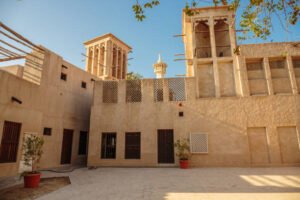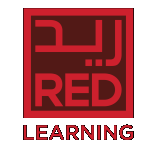Introduction

 The windcatcher, alternatively known as a wind tower, wind scoop, Malqaf, or Badgir, constitutes a time-honored architectural feature employed for millennia in regions plagued by scorching temperatures. Historians and archaeologists have attributed its origins to Persia, citing the absence of ash residue in the ruins of a 3000 BC Persian fire temple that featured chimney-like structures. Others contend that these structures first emerged in the North African deserts, particularly Egypt, drawing evidence from ancient paintings dating back to 1300 BC, depicting triangular elements atop Pharaoh Nebamun’s abode, thus leading historians to speculate that the first windcatcher originated in Egypt.
The popularity of windcatchers burgeoned over time, proliferating across the Middle East, North Africa, Western and Central Asia, owing to their passive and effective ventilation capabilities. However, given their site-specific nature and efficacy contingent on climatic variations, each region tailored the design of windcatchers to suit its environmental idiosyncrasies.
In terms of design and functionality, windcatchers capitalize on the principles elucidated in our discourse on natural ventilation across diverse contexts. Air movement ensues from the ascent of warm air and descent of cooler air. As land surfaces heat up, warm air ascends, engendering areas of low pressure. Subsequent cooling of rising air results in its movement towards water surfaces, where it descends, creating zones of high pressure that propel cooler air back towards land, thereby generating wind currents.
A windcatcher typically manifests as a chimney-like edifice crafted from clay, wood, or bricks, erected atop residences, mosques, or storage facilities to capture and channel cool breezes downwards into interior spaces. These structures function by channeling cool winds circulating at higher altitudes through vertical apertures with slanted sides, known as directional openings, while leaving only the shaft opposite the prevailing wind open. Upon ingress into interior spaces, the cooler air displaces warmer currents, which exit through openings situated opposite the windcatcher. In regions devoid of natural breezes, windcatchers serve as chimneys, expelling warm air upwards and outwards through the tower’s apertures, thereby regulating indoor climates.
The proliferation of windcatchers across diverse locales prompted adaptations in their design, yielding unidirectional, bidirectional, multidirectional, and cylindrical variants, contingent upon prevailing wind directions and specific site conditions. While no one-size-fits-all template exists, a traditional windcatcher typically assumes a square-sectioned vertical configuration, featuring four directional apertures and occasional internal vanes or shafts. Parameters such as tower height, number of facets, aperture count, and configuration and positioning of internal vanes significantly impact windcatcher efficiency, influencing airflow velocity and turbulence.
In locales characterized by consistent prevailing winds, unidirectional windcatchers suffice, featuring a single downward aperture. Conversely, bidirectional windcatchers, designed for regions with fluctuating wind patterns, incorporate internal partitions or vanes that bifurcate the tower, facilitating air collection, guidance, and dispersion into buildings. In regions experiencing potent winds and extreme heat, multidirectional windcatchers, boasting four, six, or eight facets, alongside multiple internal levels and cross-sections, are constructed to maximize airflow manipulation.
Windcatchers are often erected atop qanats, subterranean water channels prevalent in arid regions, to ensure a steady water supply to households. Positioned within shaded subterranean depths, these channels foster cool, dense air currents through convection and evaporation. The warm air drawn into the qanat commingles with trapped cool currents, unable to ascend to less dense surface air, consequently propelling cooler air into interior spaces.
In contemporary contexts, heightened environmental consciousness has spurred a shift towards passive cooling solutions, aimed at reducing energy consumption and carbon footprints. Natural ventilation, cost-effective and eco-friendly, leverages external elements like wind and temperature differentials to regulate indoor climates. Windcatchers, surpassing conventional windows in efficiency, particularly in densely populated areas with constrained airflow, are favored for their efficacy in augmenting indoor comfort.
Recent innovations encompass sensor-driven or solar-powered automated windcatchers, affording semi-passive cooling systems. Contemporary windcatchers, fashioned from concrete, aluminum, steel, wood, or stone, deviate from traditional clay, brick, and wood constructions, embracing modern materials and design sensibilities. Commercial windcatchers, equipped with integrated louvers, prevent rain and snow ingress into shafts, underscoring the evolution of windcatcher technology.
Presently, Yazd, Iran, colloquially dubbed the “city of wind towers,” hosts a plethora of traditional windcatchers adorning its skyline, serving as a testament to the enduring legacy of this architectural innovation.
The windcatcher, alternatively known as a wind tower, wind scoop, Malqaf, or Badgir, constitutes a time-honored architectural feature employed for millennia in regions plagued by scorching temperatures. Historians and archaeologists have attributed its origins to Persia, citing the absence of ash residue in the ruins of a 3000 BC Persian fire temple that featured chimney-like structures. Others contend that these structures first emerged in the North African deserts, particularly Egypt, drawing evidence from ancient paintings dating back to 1300 BC, depicting triangular elements atop Pharaoh Nebamun’s abode, thus leading historians to speculate that the first windcatcher originated in Egypt.
The popularity of windcatchers burgeoned over time, proliferating across the Middle East, North Africa, Western and Central Asia, owing to their passive and effective ventilation capabilities. However, given their site-specific nature and efficacy contingent on climatic variations, each region tailored the design of windcatchers to suit its environmental idiosyncrasies.
In terms of design and functionality, windcatchers capitalize on the principles elucidated in our discourse on natural ventilation across diverse contexts. Air movement ensues from the ascent of warm air and descent of cooler air. As land surfaces heat up, warm air ascends, engendering areas of low pressure. Subsequent cooling of rising air results in its movement towards water surfaces, where it descends, creating zones of high pressure that propel cooler air back towards land, thereby generating wind currents.
A windcatcher typically manifests as a chimney-like edifice crafted from clay, wood, or bricks, erected atop residences, mosques, or storage facilities to capture and channel cool breezes downwards into interior spaces. These structures function by channeling cool winds circulating at higher altitudes through vertical apertures with slanted sides, known as directional openings, while leaving only the shaft opposite the prevailing wind open. Upon ingress into interior spaces, the cooler air displaces warmer currents, which exit through openings situated opposite the windcatcher. In regions devoid of natural breezes, windcatchers serve as chimneys, expelling warm air upwards and outwards through the tower’s apertures, thereby regulating indoor climates.
The proliferation of windcatchers across diverse locales prompted adaptations in their design, yielding unidirectional, bidirectional, multidirectional, and cylindrical variants, contingent upon prevailing wind directions and specific site conditions. While no one-size-fits-all template exists, a traditional windcatcher typically assumes a square-sectioned vertical configuration, featuring four directional apertures and occasional internal vanes or shafts. Parameters such as tower height, number of facets, aperture count, and configuration and positioning of internal vanes significantly impact windcatcher efficiency, influencing airflow velocity and turbulence.
In locales characterized by consistent prevailing winds, unidirectional windcatchers suffice, featuring a single downward aperture. Conversely, bidirectional windcatchers, designed for regions with fluctuating wind patterns, incorporate internal partitions or vanes that bifurcate the tower, facilitating air collection, guidance, and dispersion into buildings. In regions experiencing potent winds and extreme heat, multidirectional windcatchers, boasting four, six, or eight facets, alongside multiple internal levels and cross-sections, are constructed to maximize airflow manipulation.
Windcatchers are often erected atop qanats, subterranean water channels prevalent in arid regions, to ensure a steady water supply to households. Positioned within shaded subterranean depths, these channels foster cool, dense air currents through convection and evaporation. The warm air drawn into the qanat commingles with trapped cool currents, unable to ascend to less dense surface air, consequently propelling cooler air into interior spaces.
In contemporary contexts, heightened environmental consciousness has spurred a shift towards passive cooling solutions, aimed at reducing energy consumption and carbon footprints. Natural ventilation, cost-effective and eco-friendly, leverages external elements like wind and temperature differentials to regulate indoor climates. Windcatchers, surpassing conventional windows in efficiency, particularly in densely populated areas with constrained airflow, are favored for their efficacy in augmenting indoor comfort.
Recent innovations encompass sensor-driven or solar-powered automated windcatchers, affording semi-passive cooling systems. Contemporary windcatchers, fashioned from concrete, aluminum, steel, wood, or stone, deviate from traditional clay, brick, and wood constructions, embracing modern materials and design sensibilities. Commercial windcatchers, equipped with integrated louvers, prevent rain and snow ingress into shafts, underscoring the evolution of windcatcher technology.
Presently, Yazd, Iran, colloquially dubbed the “city of wind towers,” hosts a plethora of traditional windcatchers adorning its skyline, serving as a testament to the enduring legacy of this architectural innovation.
The Windcatcher: Persian Ingenuity and its Influence in the UAE


Conclusion The windcatcher stands as a testament to the enduring legacy of Persian architecture and its timeless relevance in a rapidly changing world. As we continue to explore new frontiers in architectural design, let us not forget the lessons of the past nor the wisdom embedded in age-old practices like the windcatcher. In celebrating our architectural heritage, we honor not only the achievements of our ancestors but also the boundless potential for innovation and sustainability in shaping the built environment of tomorrow. In the context of the UAE, the integration of windcatcher technology into contemporary architecture serves as a beacon of progress, signaling a harmonious balance between tradition and modernity in the pursuit of a more sustainable and resilient future.




